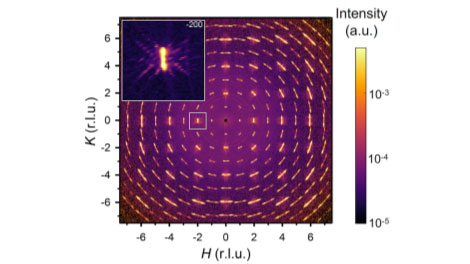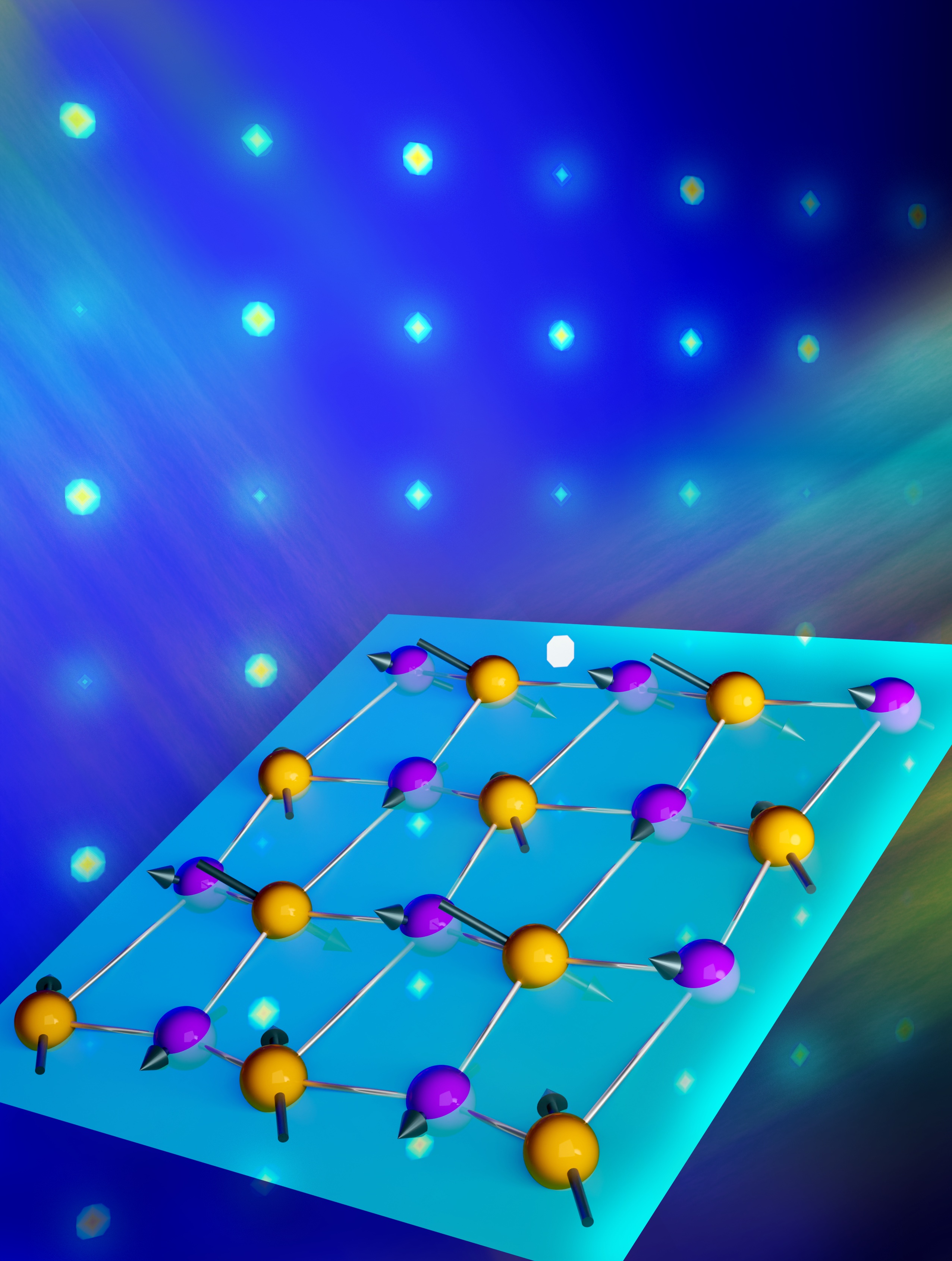Plastic Deformation Engineering Dramatically Enhances Quantum Phenomena
Scientists use a common engineering approach to enhance the superconductivity and induce ferroelectricity in the quantum material strontium titanate.

The Science
Quantum materials are substances with special properties that can only be explained by quantum mechanics. One example is strontium titanate. This material has interesting superconducting and ferroelectric properties. Superconductivity involves zero resistance to electricity and the complete expulsion of magnetic fields. Ferroelectricity involves spontaneous electric polarization (like the poles of a magnet) that can be reversed by an electric field. In this study, scientists discovered that deforming the material in certain ways causes defects (known as dislocations) to organize themselves into repeating structures. These changes lead to surprising improvements of strontium titanate’s superconducting and ferroelectric properties.
The Impact
This research demonstrates the great promise of plastic deformation as a way to modify and create quantum materials and phenomena. Plastic deformation permanently changes a material’s shape without causing cracks or fractures. This ability will help scientists uncover novel electronic properties and materials that could be useful in new applications. This work also highlights the power of state-of-the-art neutron and X-ray scattering probes. These tools are key to deciphering the complex structures of such quantum materials. Finally, the research demonstrates the potential of a scientific approach that combines experiment and theory.
Summary
Materials initially deform elastically when subjected to mechanical stress, and they return to their original state once the stress is removed. Plastic deformation, on the other hand, involves straining a material beyond this elastic regime and creates extended dislocation defects and large-scale dislocation structures. Scientists have used elastic deformation extensively to study and manipulate quantum materials, but they have not fully explored the effects of plastic deformation. In this research, scientists discovered that the prominent perovskite oxide strontium titanate, when subjected to plastic deformation, displays a dramatic enhancement in its superconductivity. Neutron and X-ray scattering enabled real-space modeling of the periodic dislocation structures that give rise to these enhanced electronic properties. Raman scattering revealed the existence of local ferroelectric order in the deformed system. The experimental results were complemented by theoretical insight into the possible microscopic origin of the observed phenomena.
The study demonstrates the promise of plastic deformation and dislocation engineering as tools to manipulate the electronic properties of quantum materials. It also showcases the power of a synergistic scientific approach to the study of quantum materials that involves multiple experimental probes and theoretical insight.
Contact
Martin Greven
University of Minnesota Center for Quantum Materials
greven@umn.edu
Funding
This work was primarily supported by the Department of Energy (DOE) Office of Science, Office of Basic Energy Sciences, Materials Sciences and Engineering Division. This research used resources at the Spallation Neutron Source and the Advanced Photon Source, which are DOE Office of Science user facilities. The Raman scattering work was carried out at Peking University and sponsored by the National Science Foundation of China. One of the team members was sponsored by the Croatian Science Foundation during the finalization of the manuscript. The work also used facilities at the Minnesota Nano Center, which is supported by the National Science Foundation.
Publications
Hameed, S., et al., Enhanced superconductivity and ferroelectric quantum criticality in plastically deformed strontium titanate, Nature Materials 21, 54–61 (2022). [DOI: 10.1038/s41563-021-01102-3]
Related Links
Learn more about the DOE Office of Science light sources.
Highlight Categories
Performer: SC User Facilities , BES User Facilities , APS , SNS
Additional: Collaborations , International Collaboration



